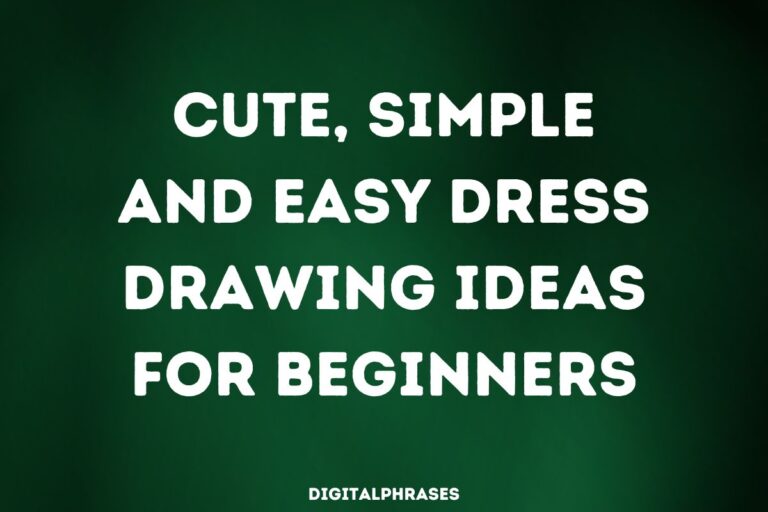30 Fabric Texture Drawing Ideas
Ever thought about how can you bring your dead and dull fabric texture drawings to life?
Well, it’s all about the finesse that you need in your drawings.
Here are some fabric texture drawing examples that will help you get better at your art.
Let’s go.
Fabric Texture Drawing Ideas
Easy Fabric Texture Drawing Ideas
When starting with the basics, it’s best to begin with simple ideas.
Think about fabrics you see every day like T-shirts, curtains, or tablecloths. You can practice drawing smooth textures, like silk, by using light, soft pencil strokes.
Try adding a few folds to make it look realistic. Another easy idea is drawing denim. Create small, cross-hatch lines to mimic the weave, then shade lightly to add depth. Towels are also fun to draw because of their bumpy, fluffy texture.
Use dots and small circles to give them a soft look. Keep experimenting, and you’ll see improvement with each sketch!
1
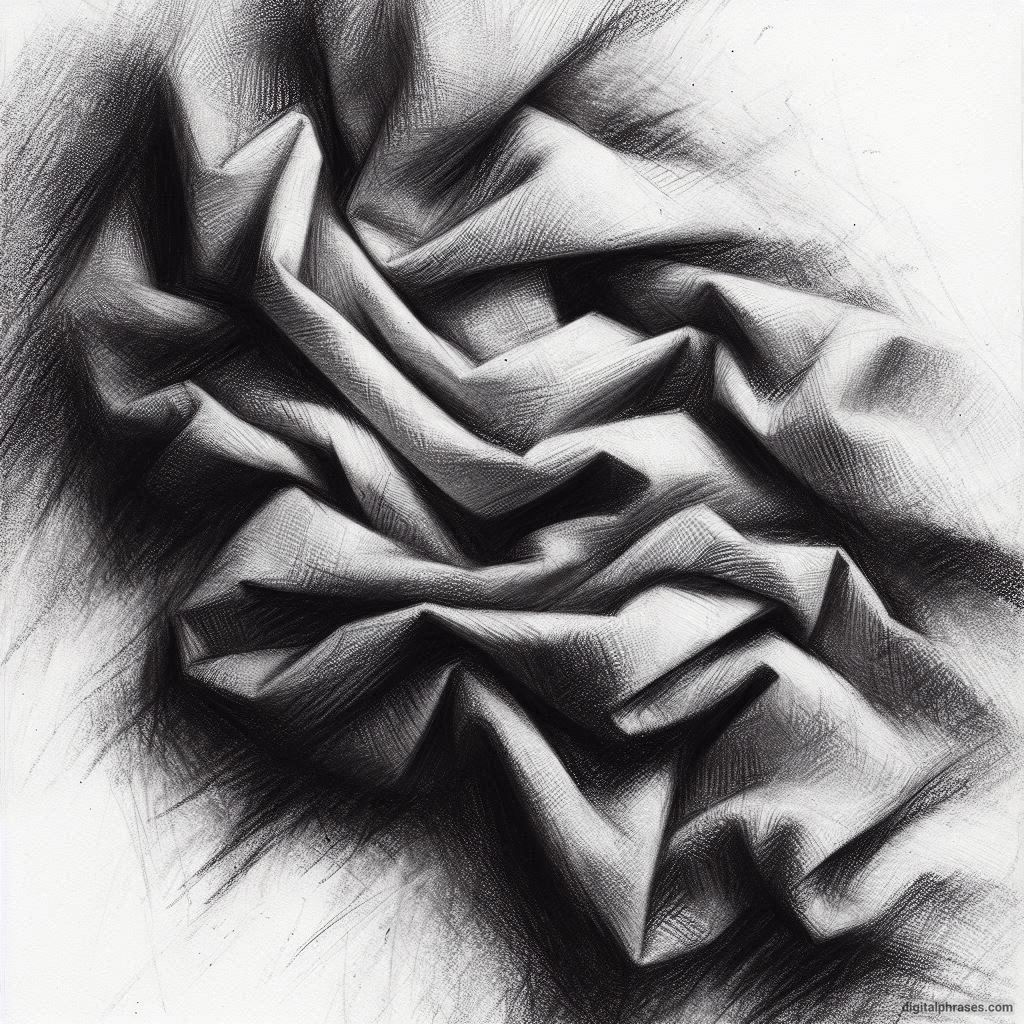
2
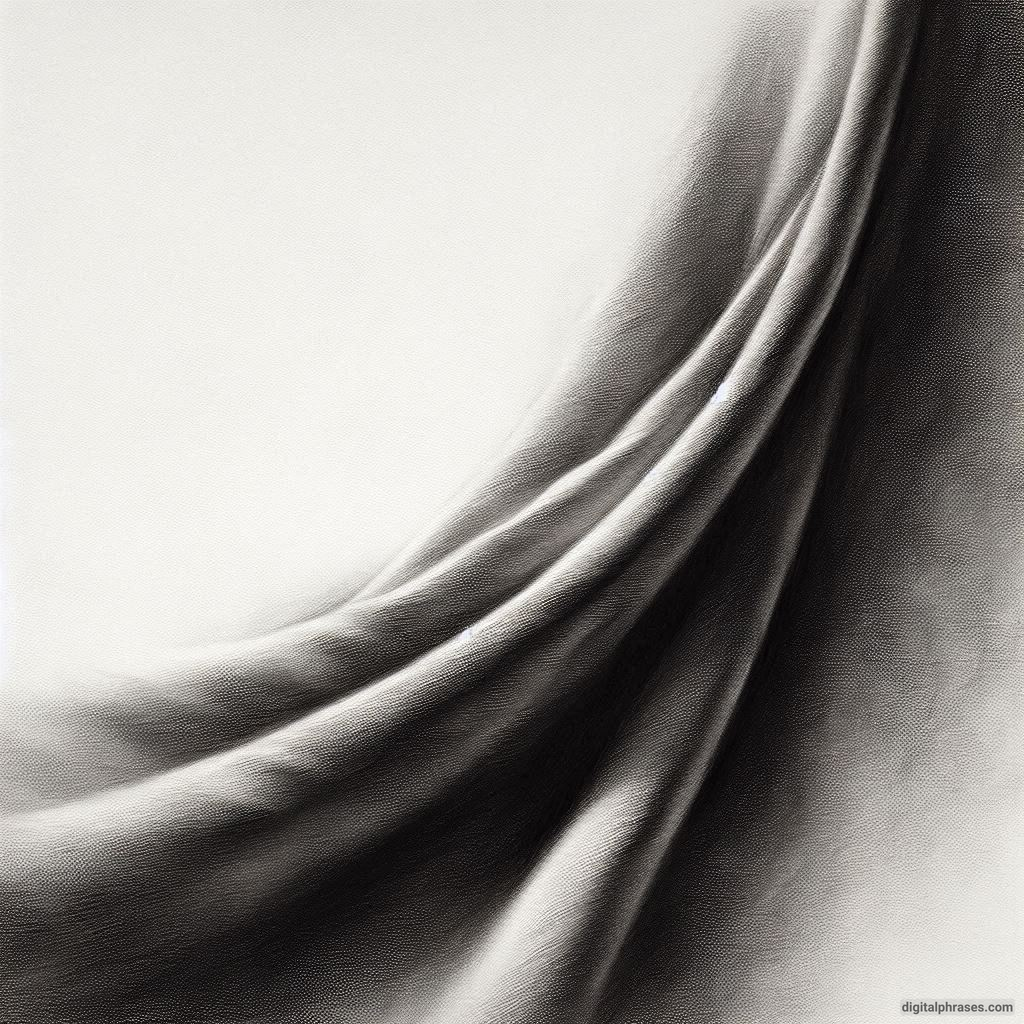
3
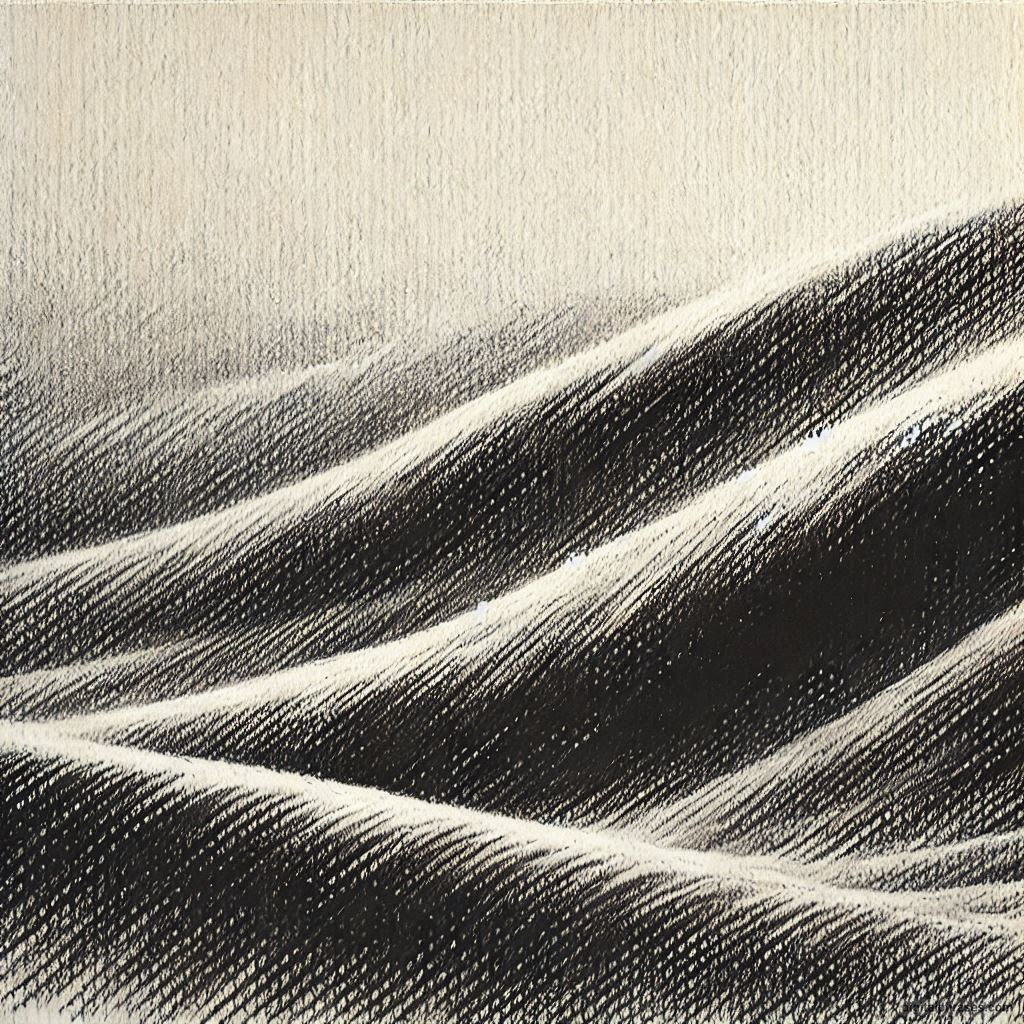
4
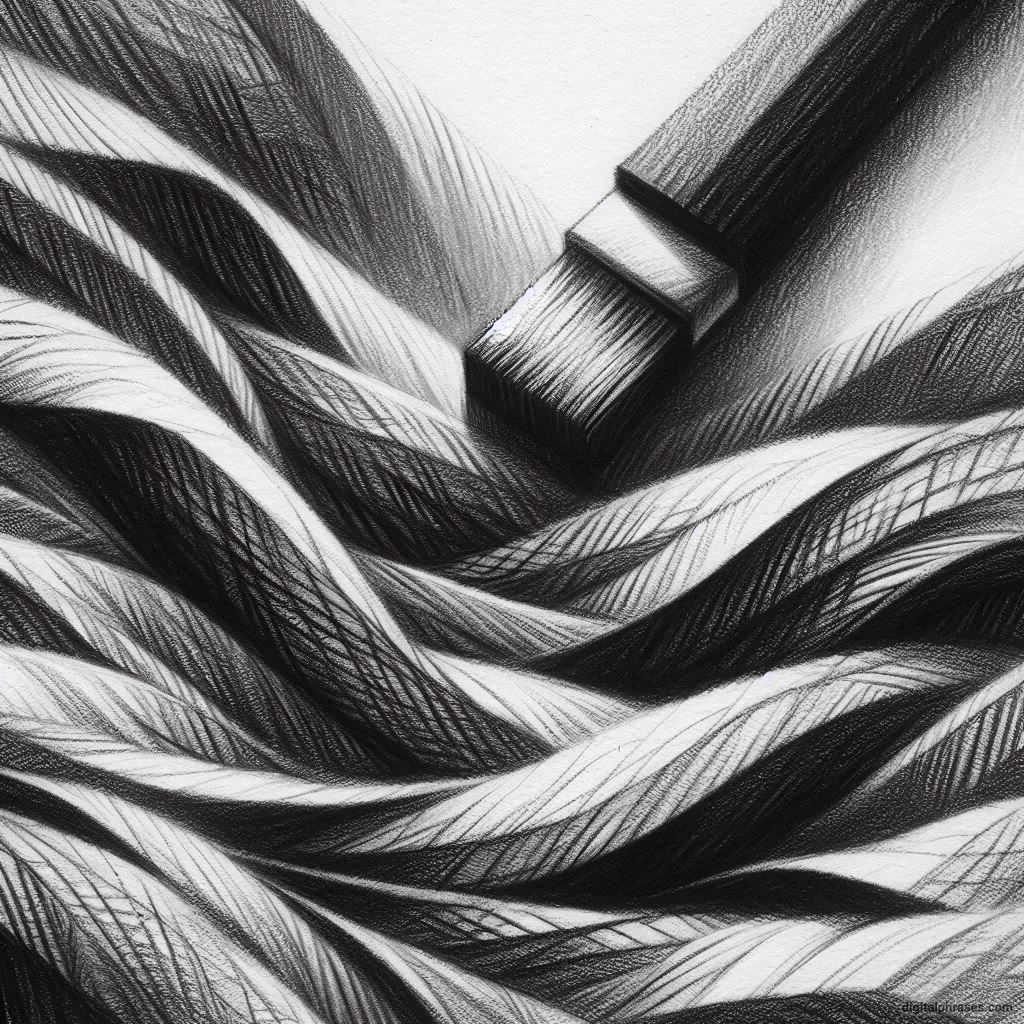
5
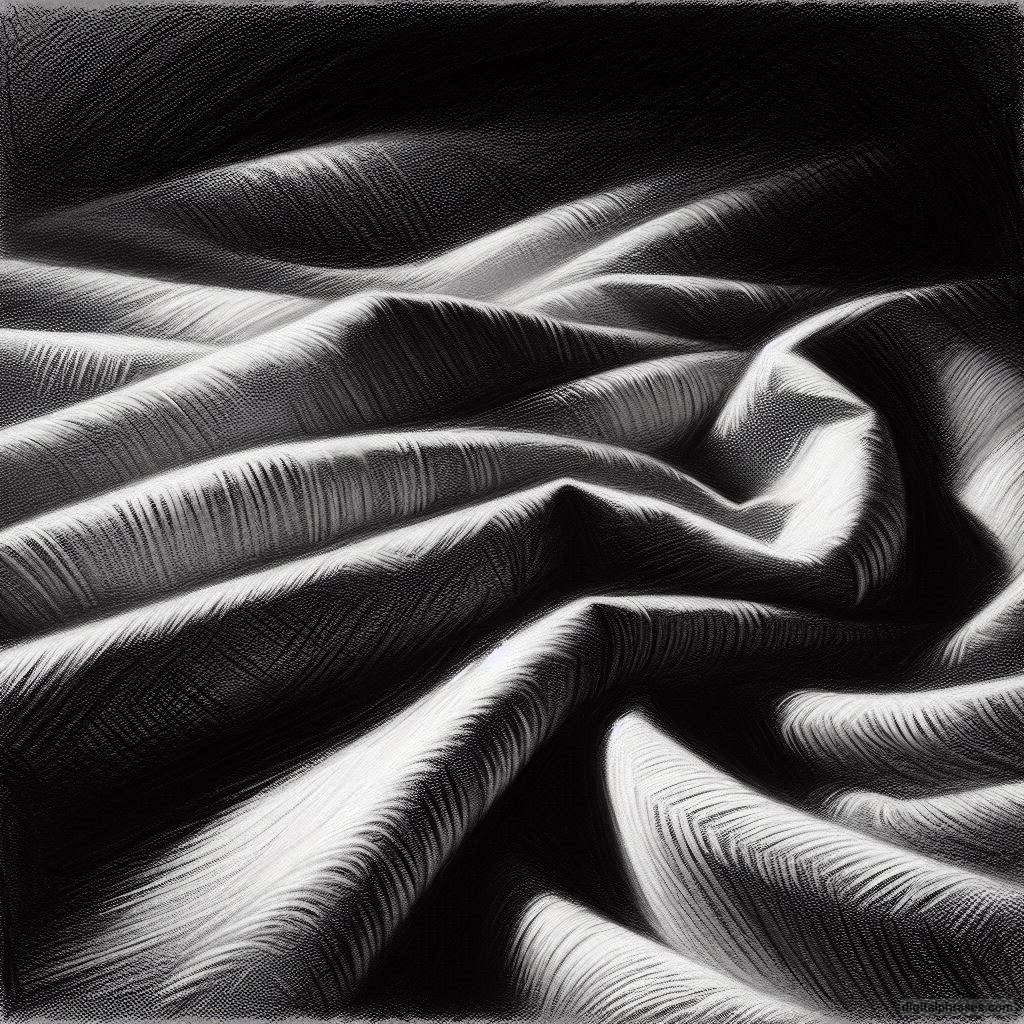
6
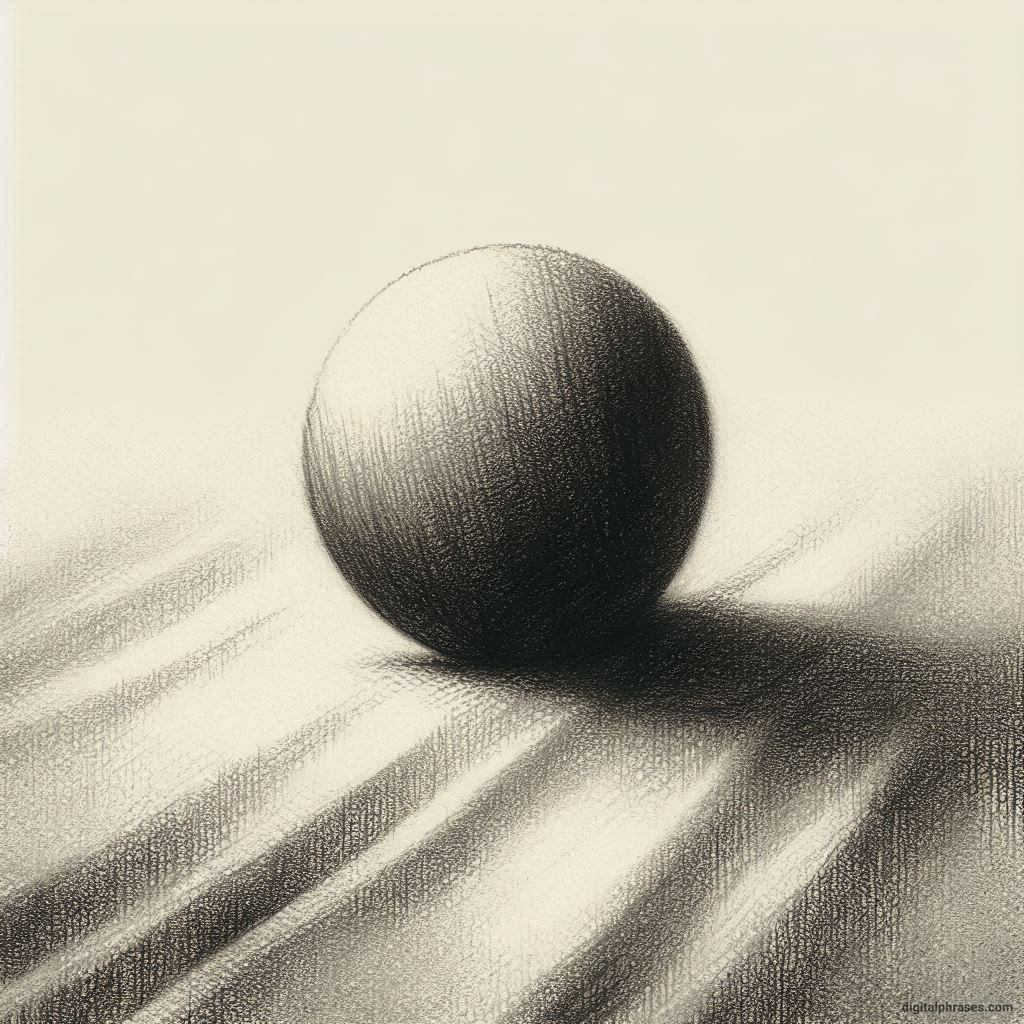
7
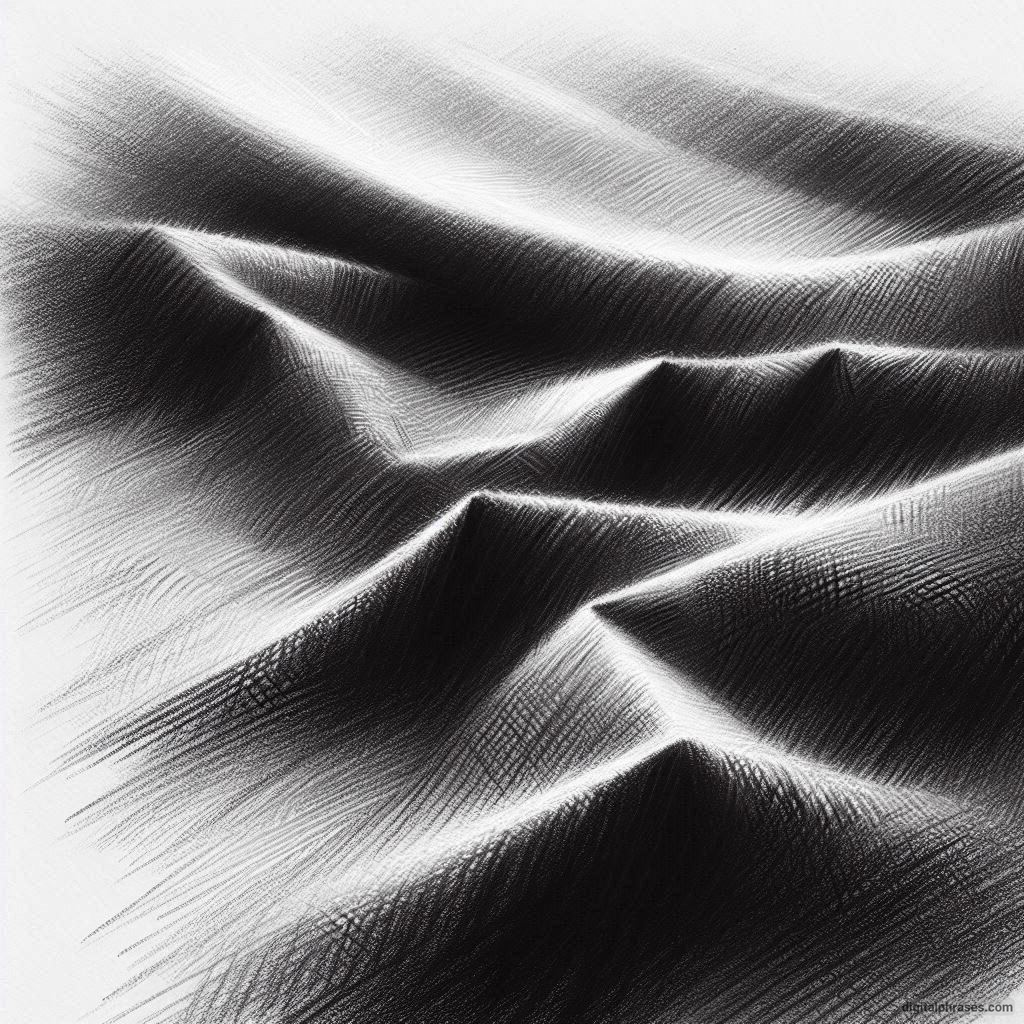
8
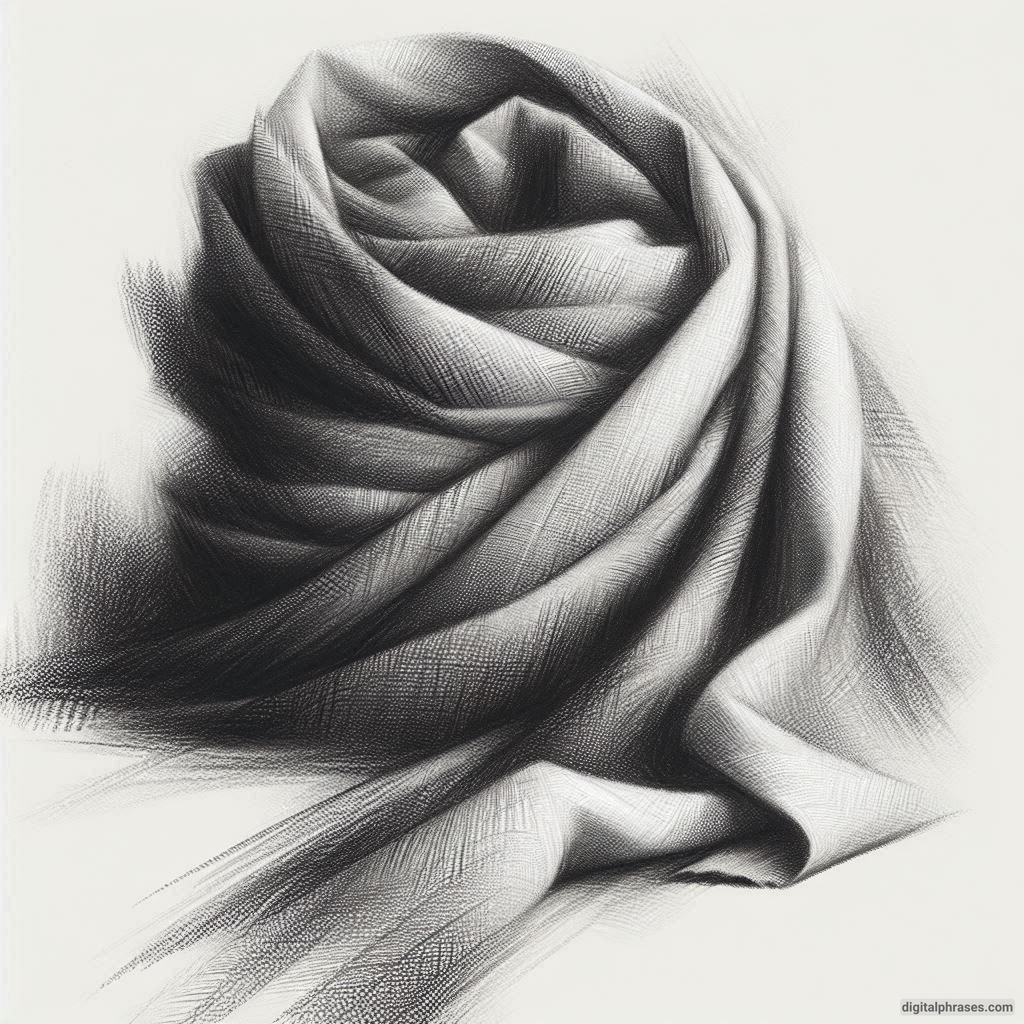
9
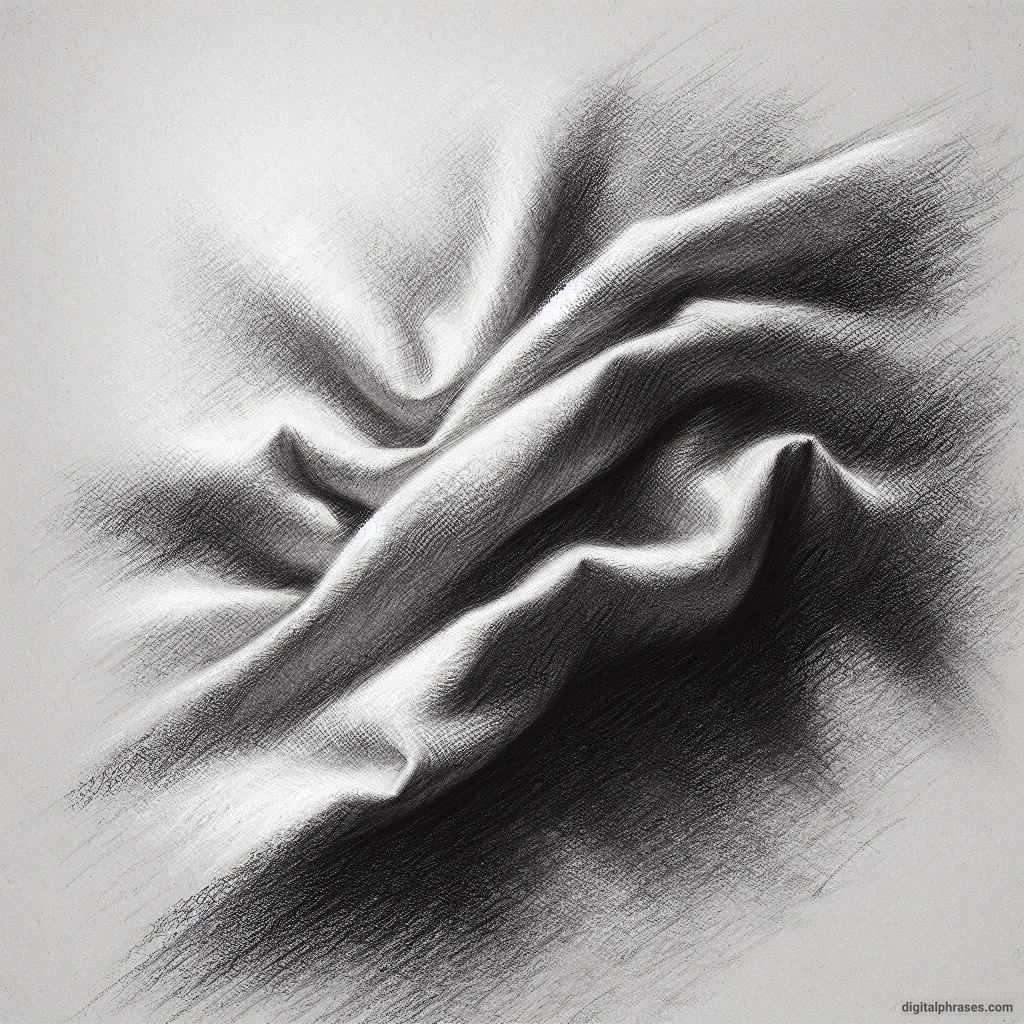
10
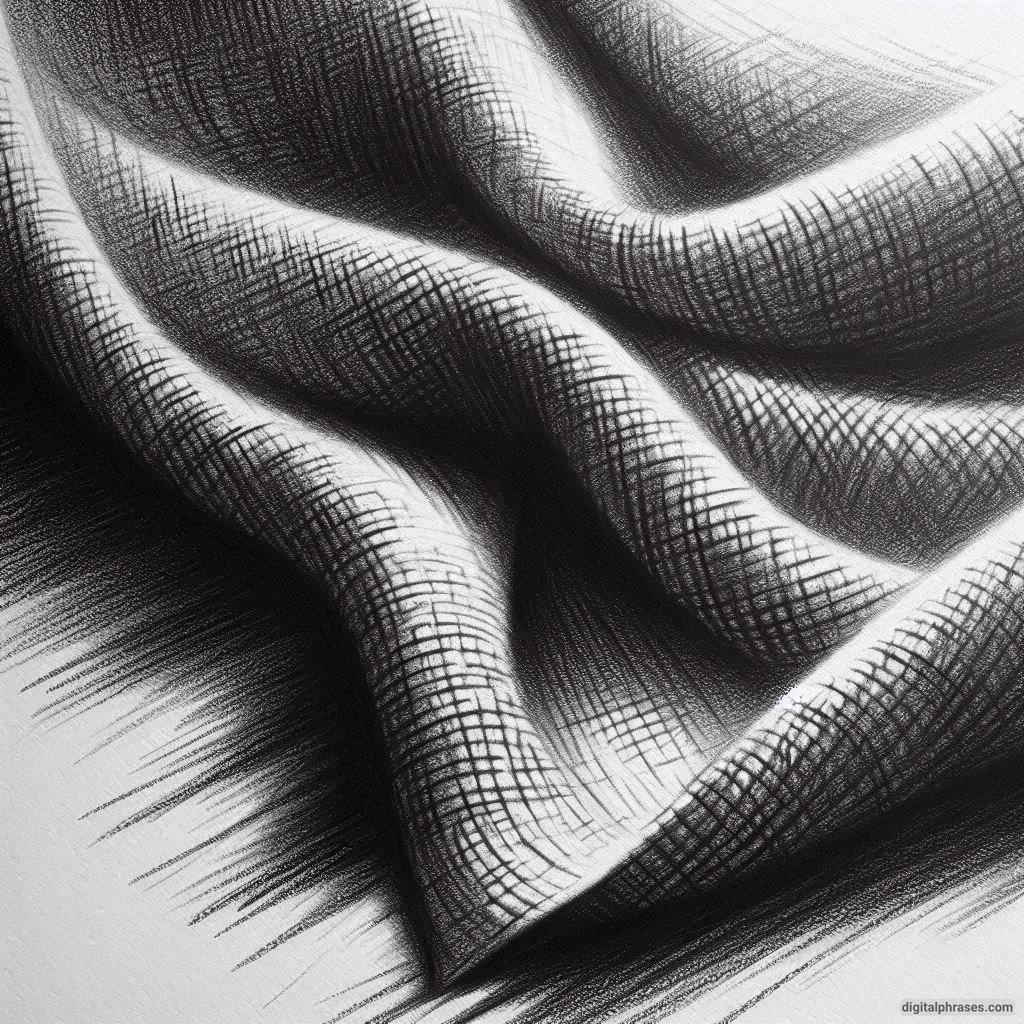
Woven Fabric Texture Drawing Ideas
Woven fabrics have unique patterns that can be super satisfying to draw.
Think of baskets, burlap, or even a cozy knitted sweater.
Start by sketching simple crisscross lines to mimic the over-under pattern of woven materials. To add more detail, vary the thickness of the lines to show how some threads sit on top while others tuck underneath. Shading one side of the weave helps create a 3D effect.
You can also draw textured rugs with bold, chunky weaves. Pay attention to the direction of the threads and how light falls on them. Woven fabrics are perfect for adding interesting details to your artwork.
1
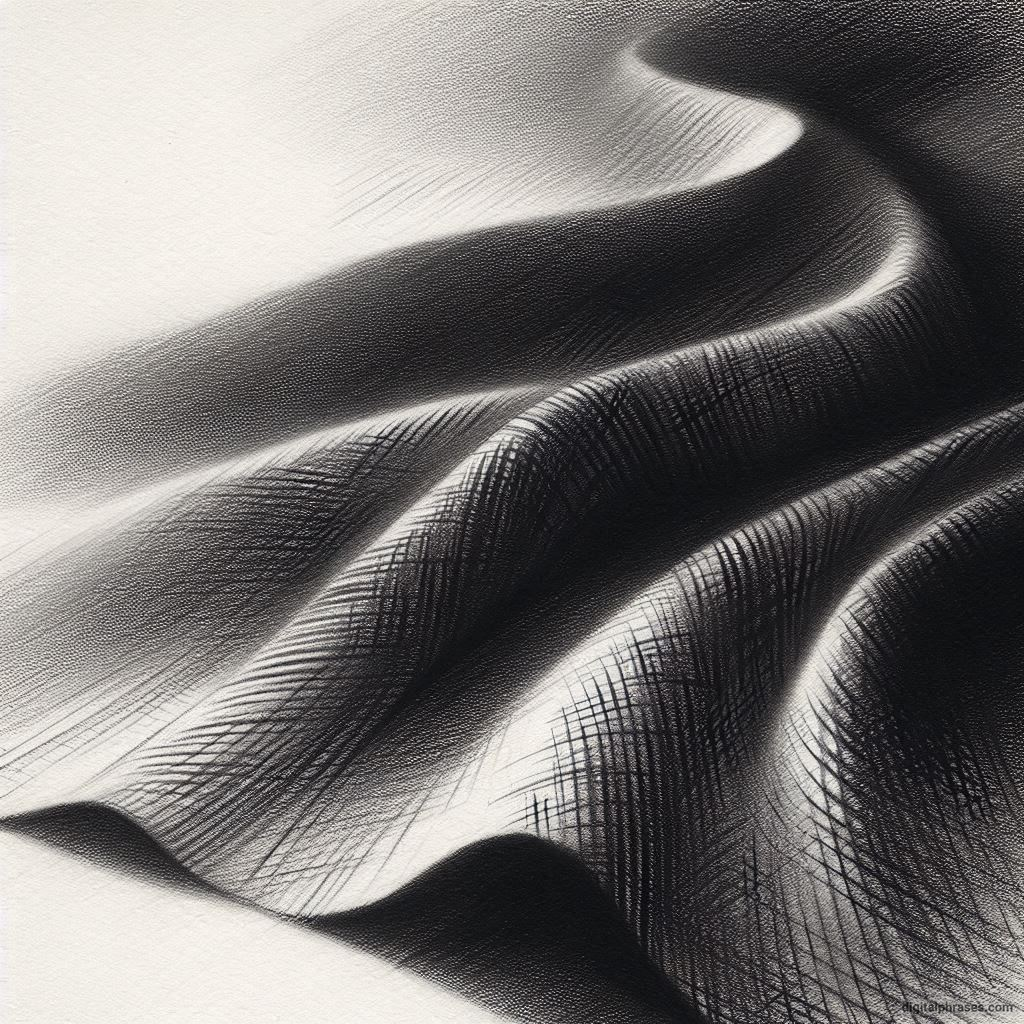
2
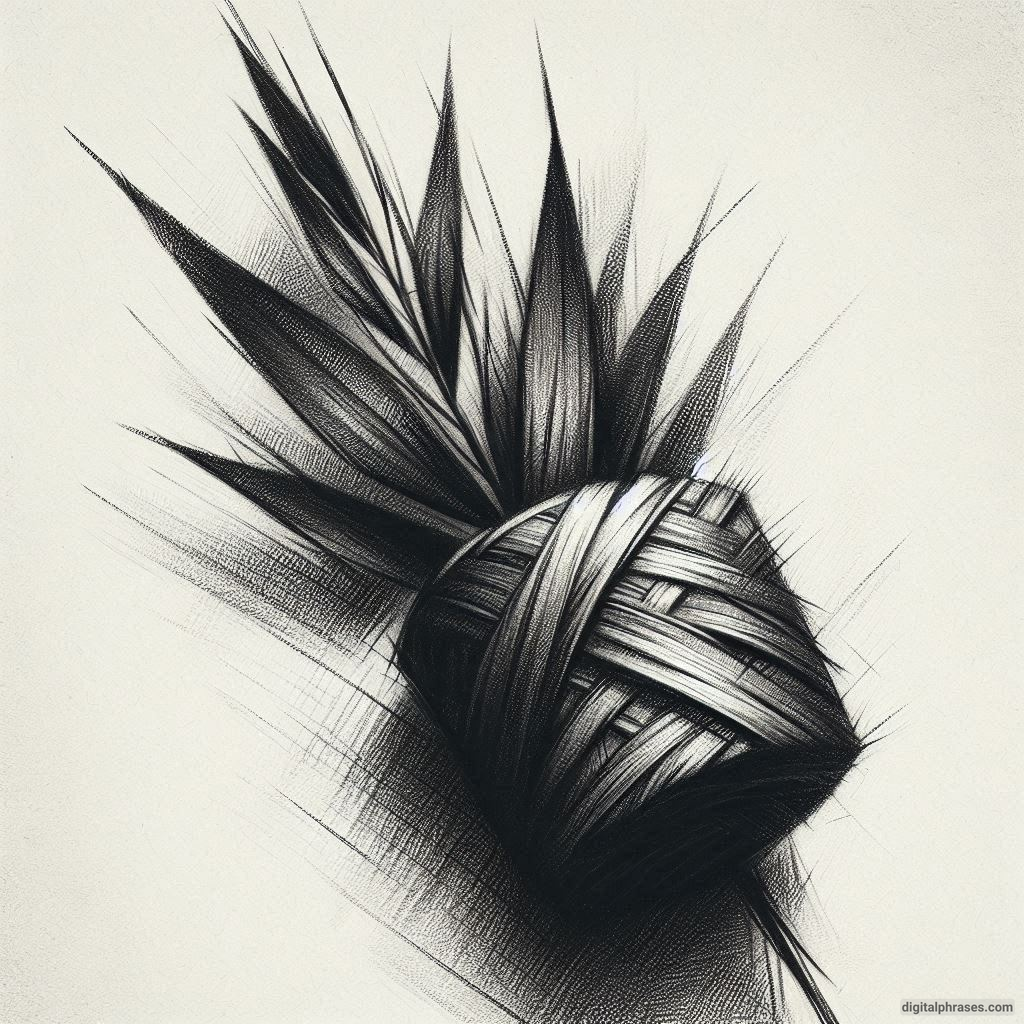
3
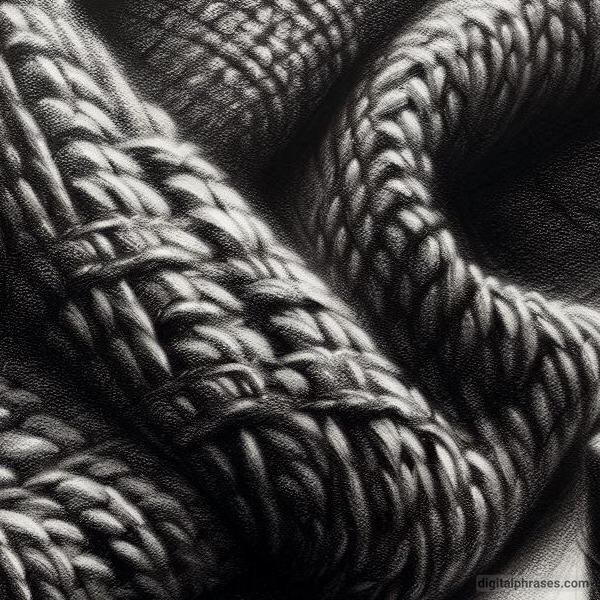
4
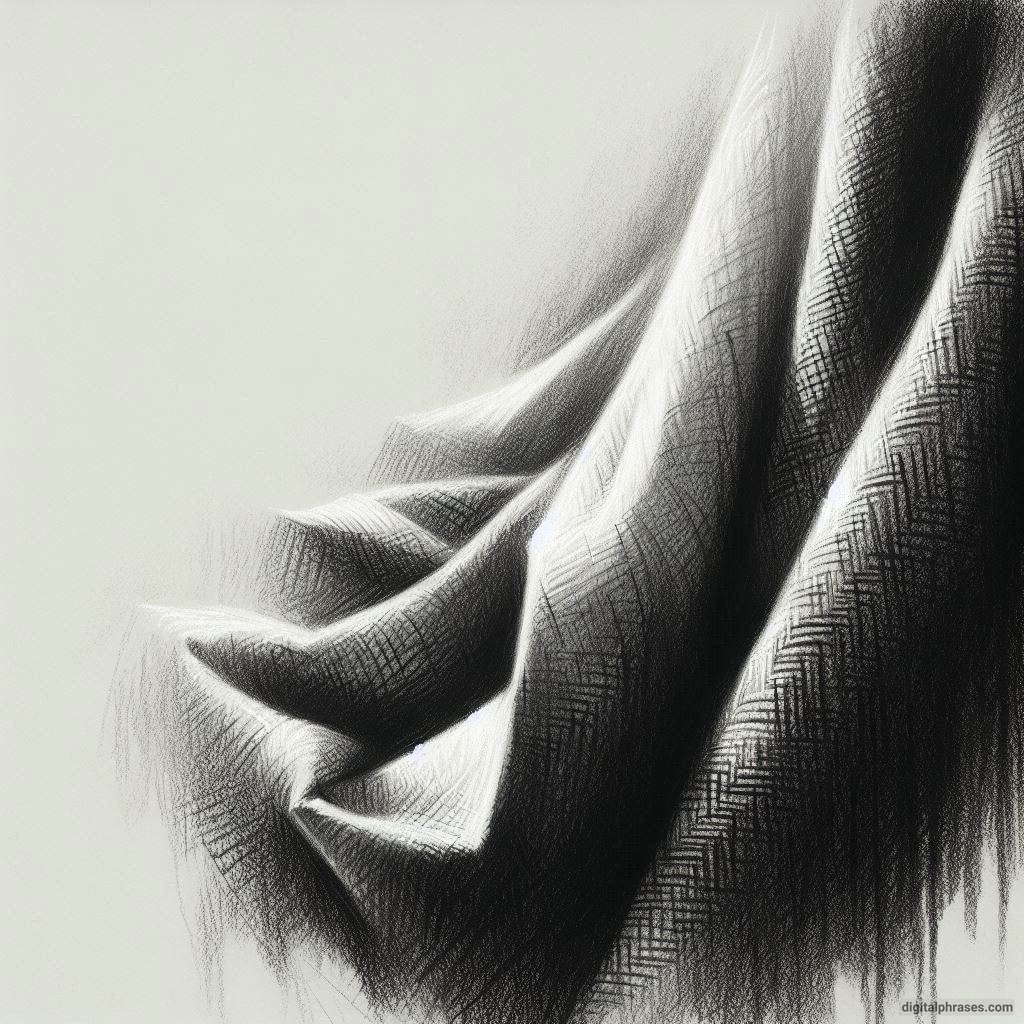
5
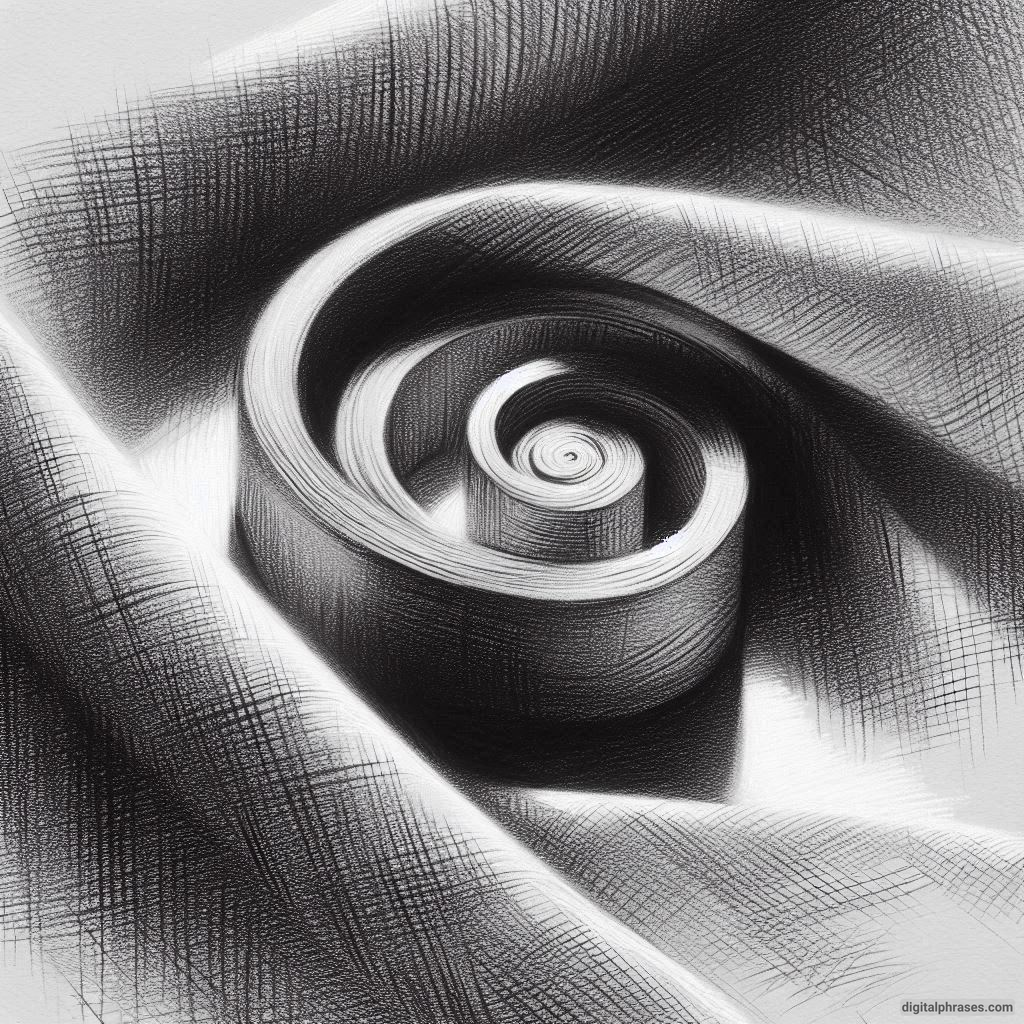
6
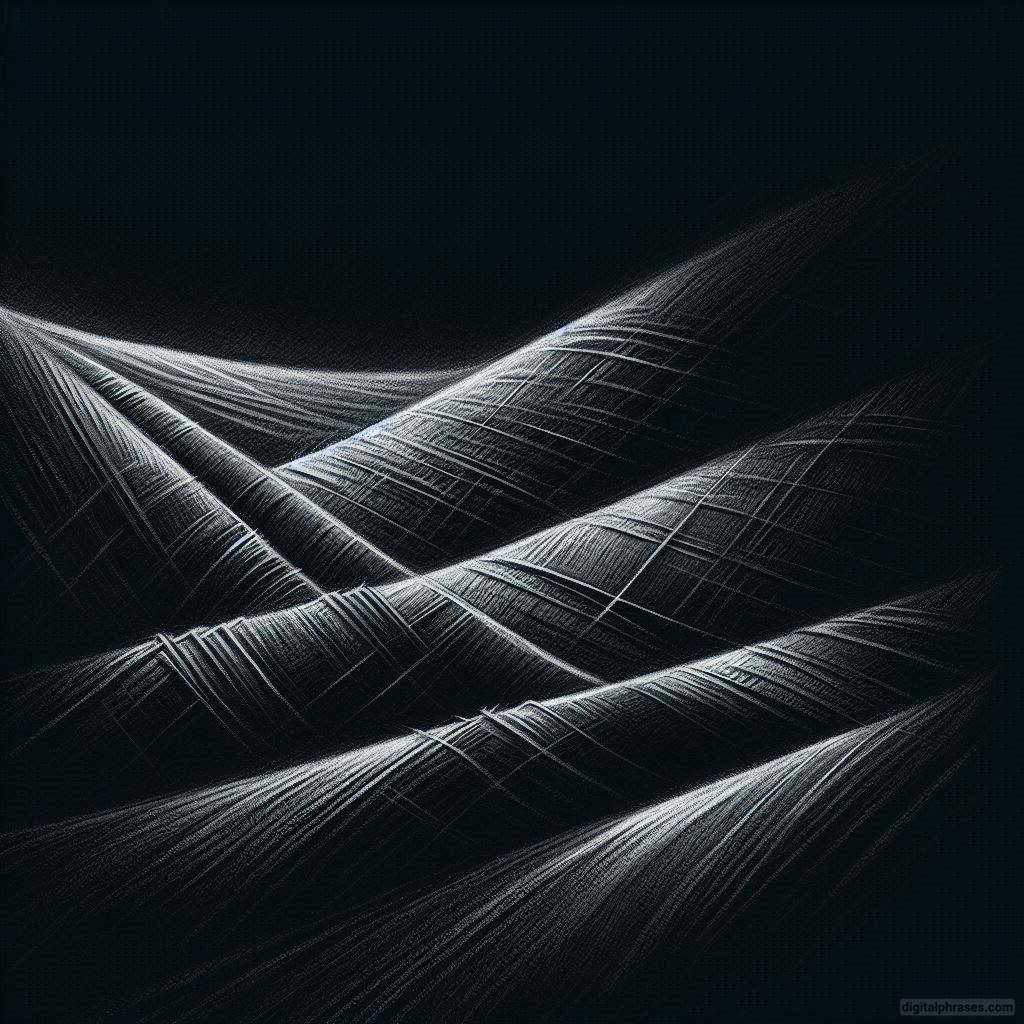
7
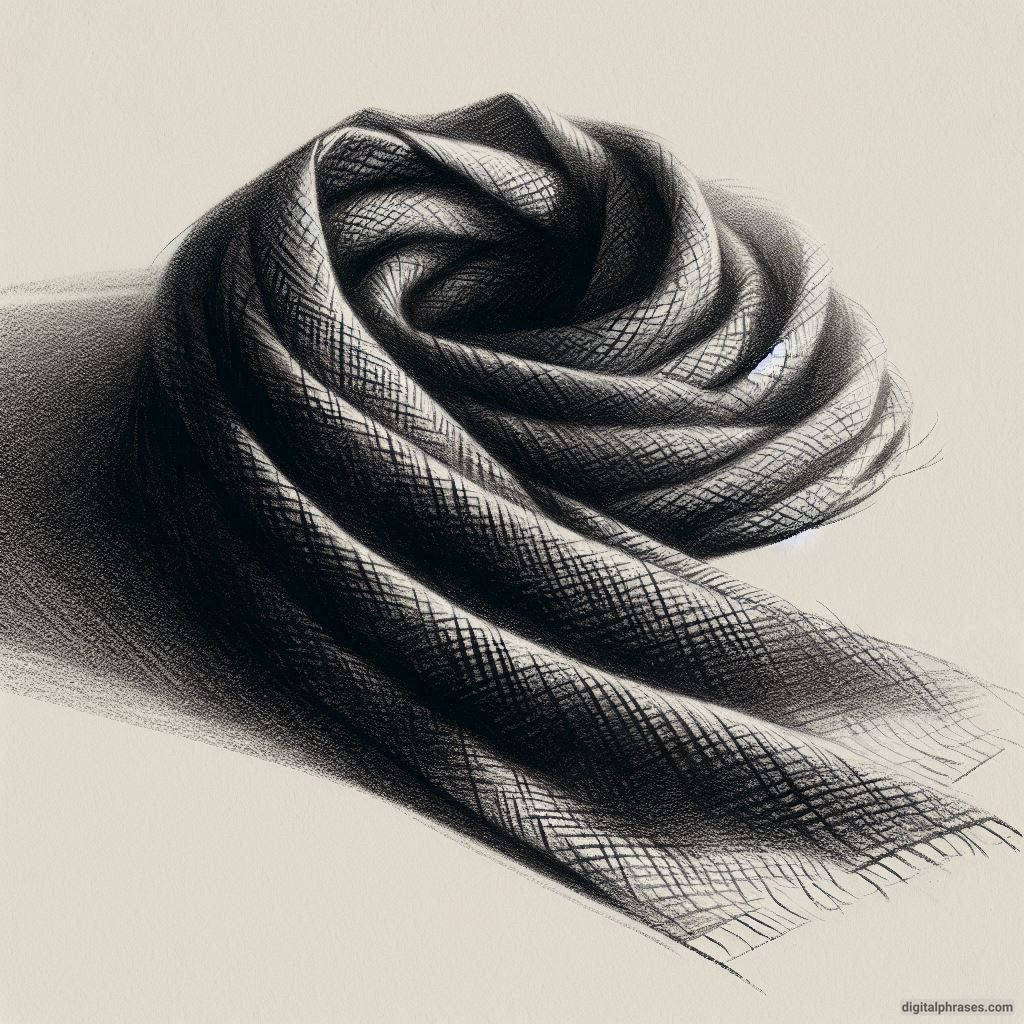
8
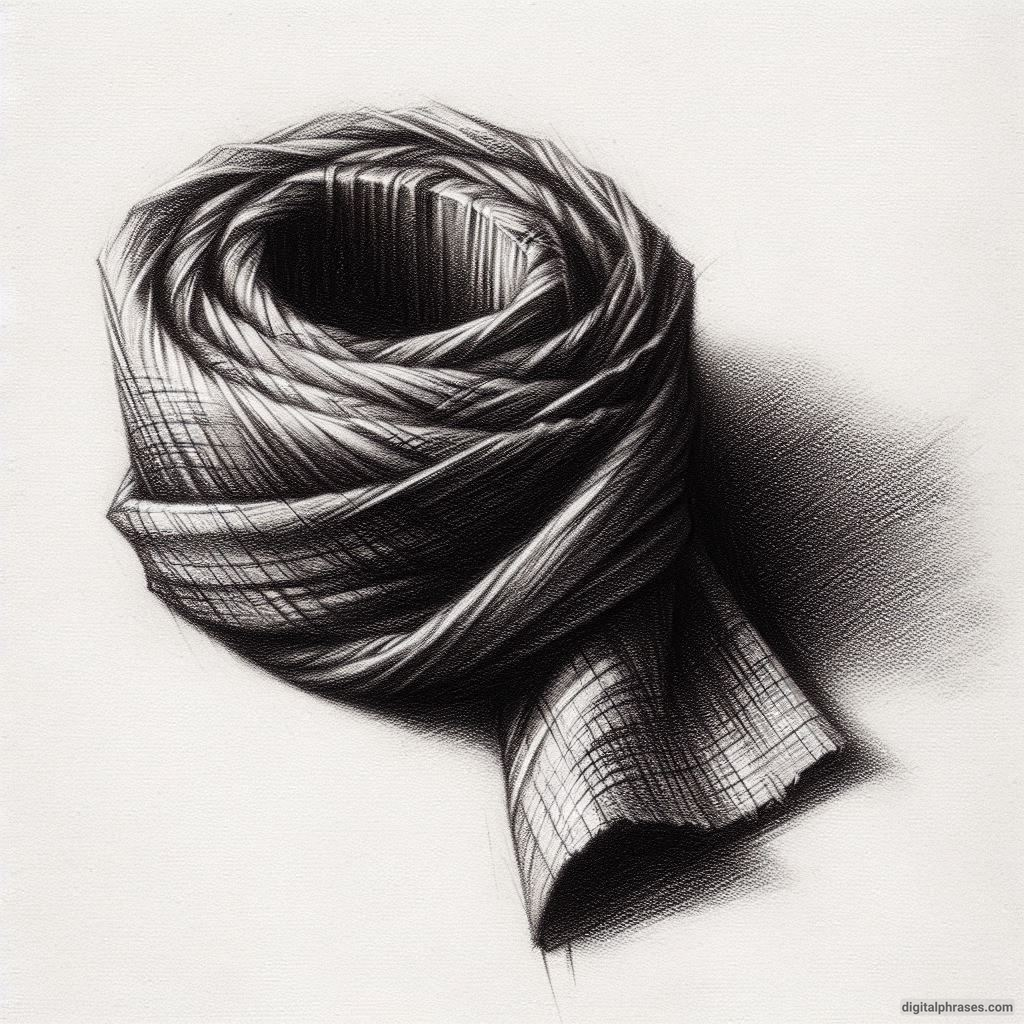
9
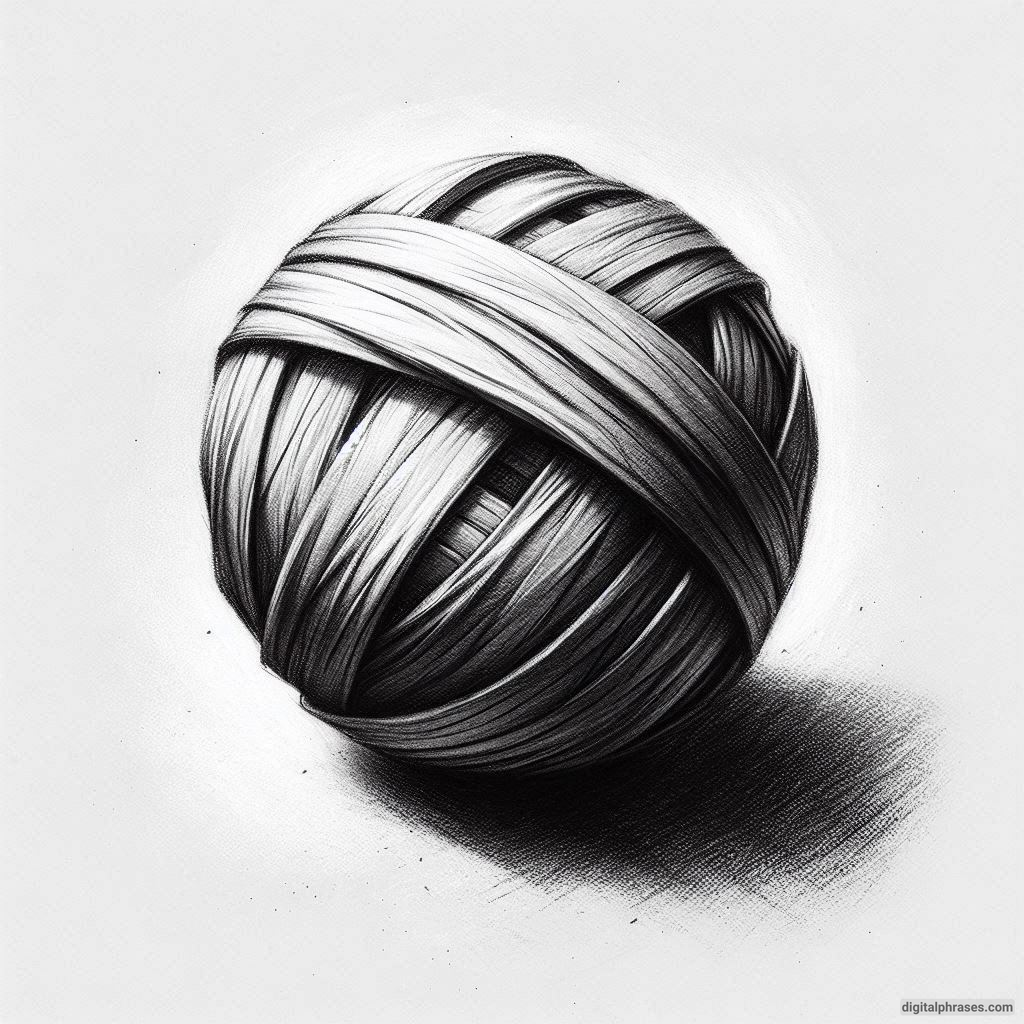
10
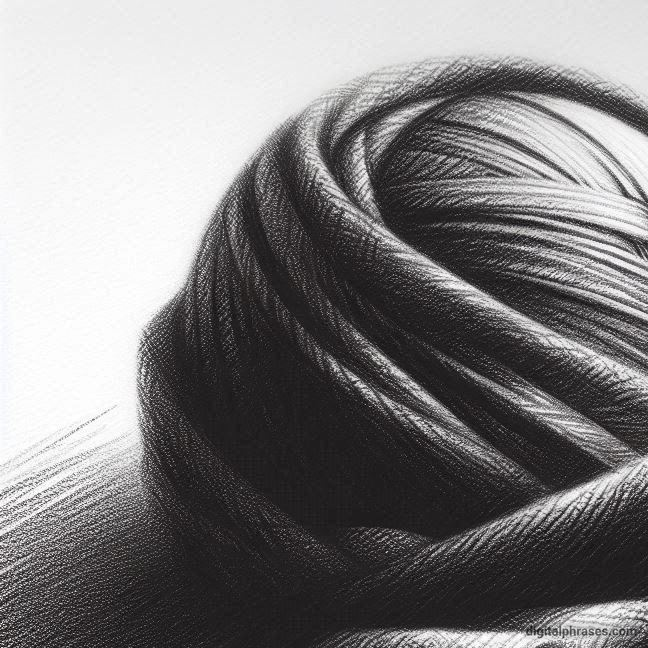
Cotton Fabric Texture Drawing Ideas
Cotton fabrics are everywhere, making them a great texture to practice drawing. They can be smooth, soft, or slightly rough, depending on the type. To draw plain cotton, start with gentle, flowing lines to show how the fabric drapes.
Add subtle shading to create folds and creases.
If you’re drawing a T-shirt, notice how the fabric stretches slightly around seams or wrinkles. For textured cotton, like a waffle-knit towel, sketch a grid pattern with tiny squares and shade around them to create depth.
Don’t forget about printed cotton fabrics—adding small patterns like flowers or dots can make your drawing pop.
Cotton textures are simple yet versatile, perfect for all kinds of sketches.
1
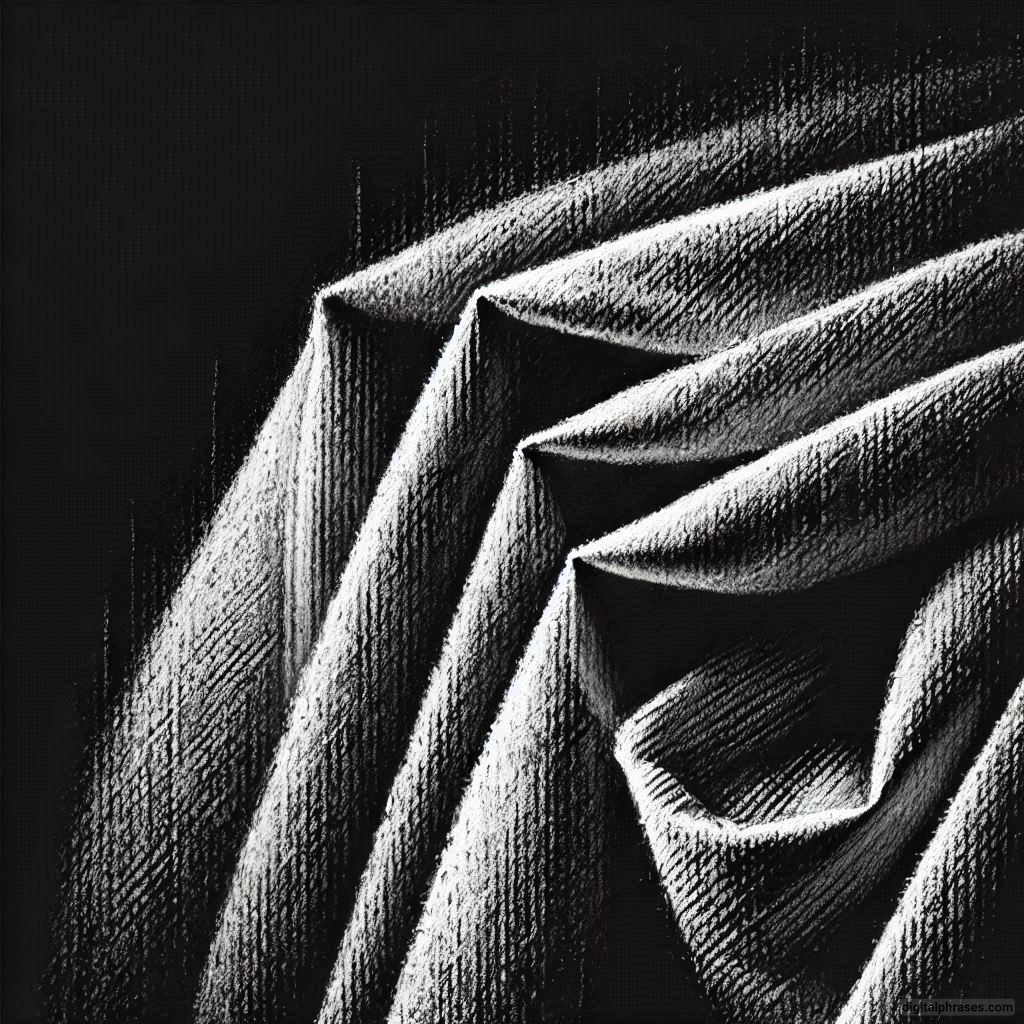
2
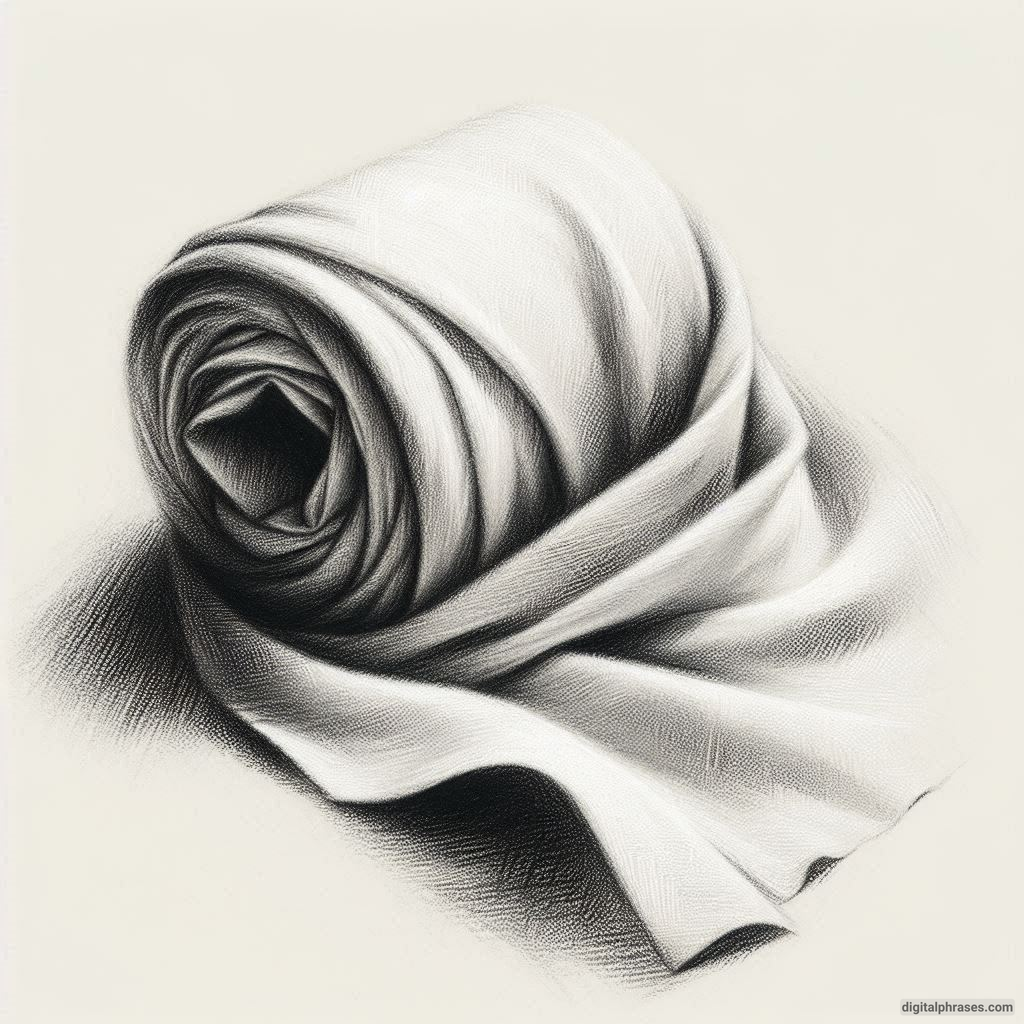
3
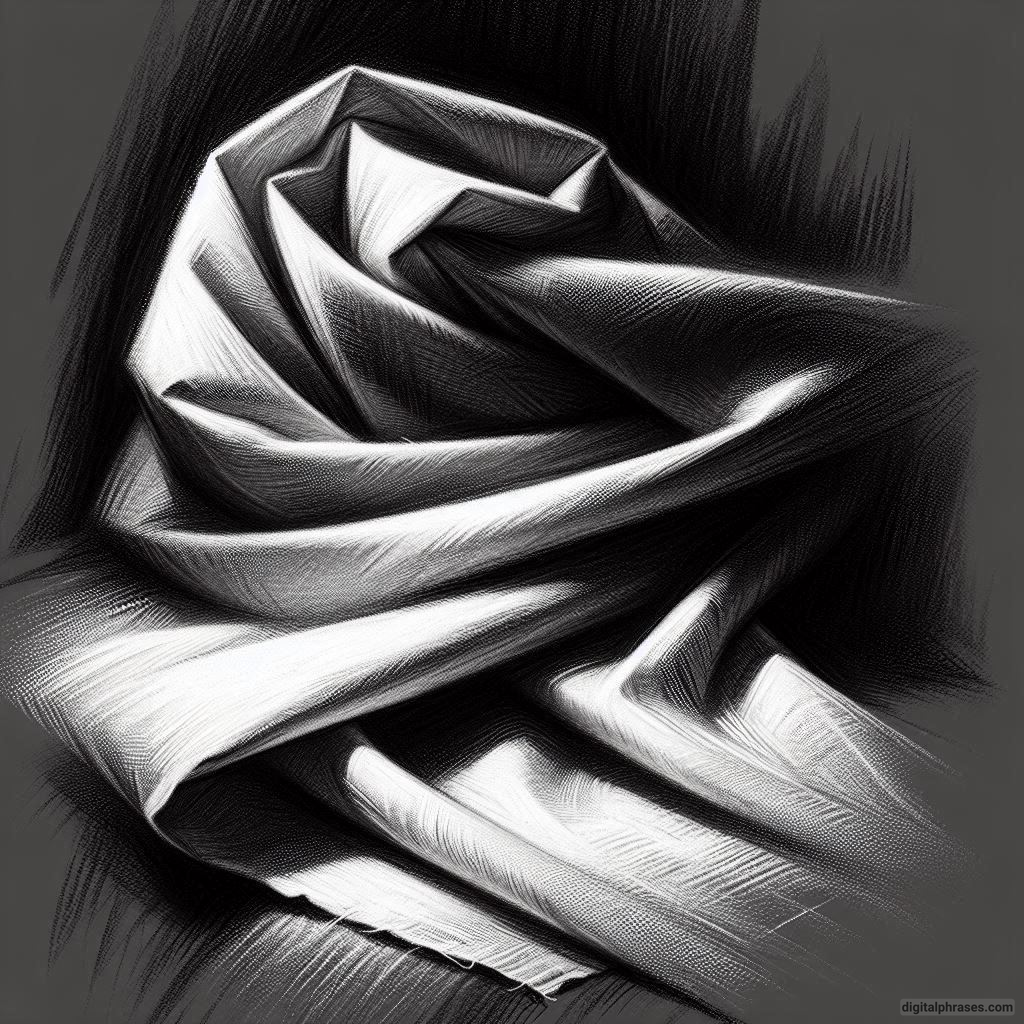
4
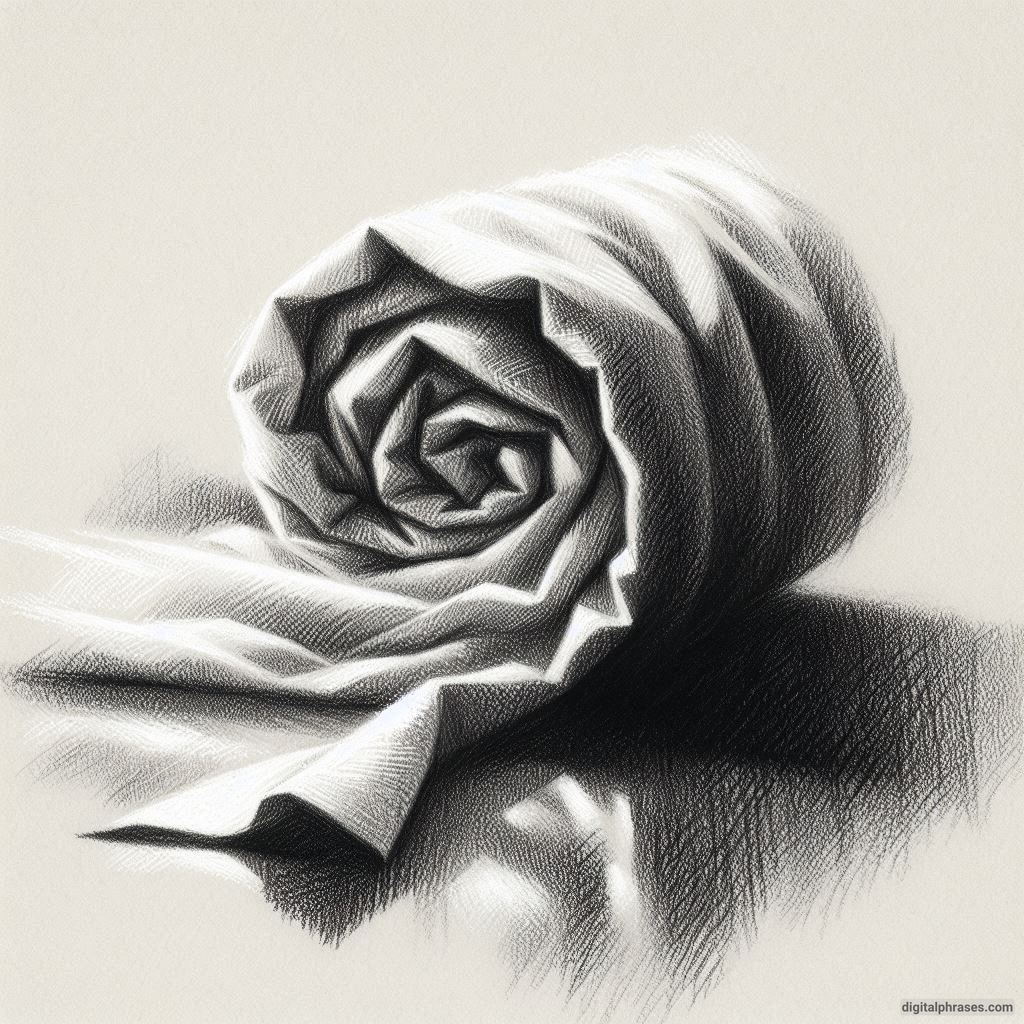
5
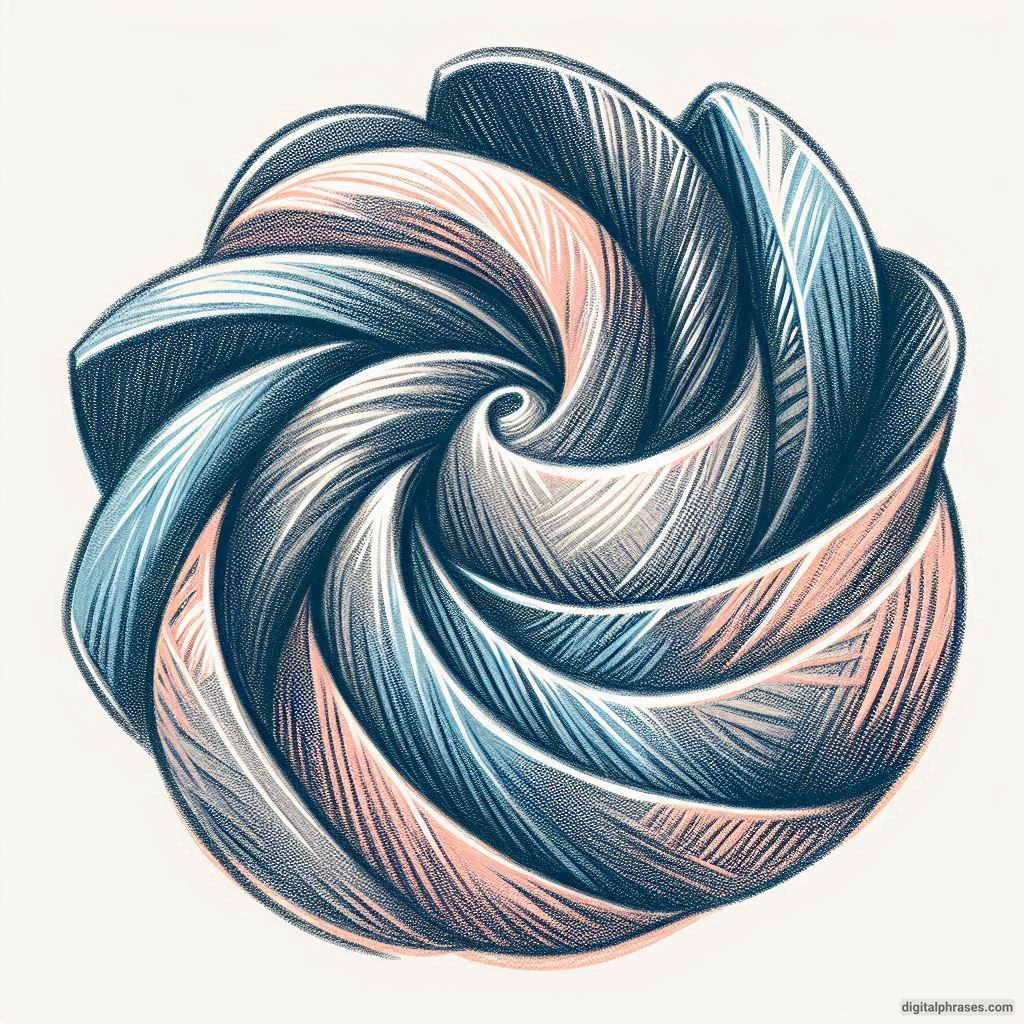
6
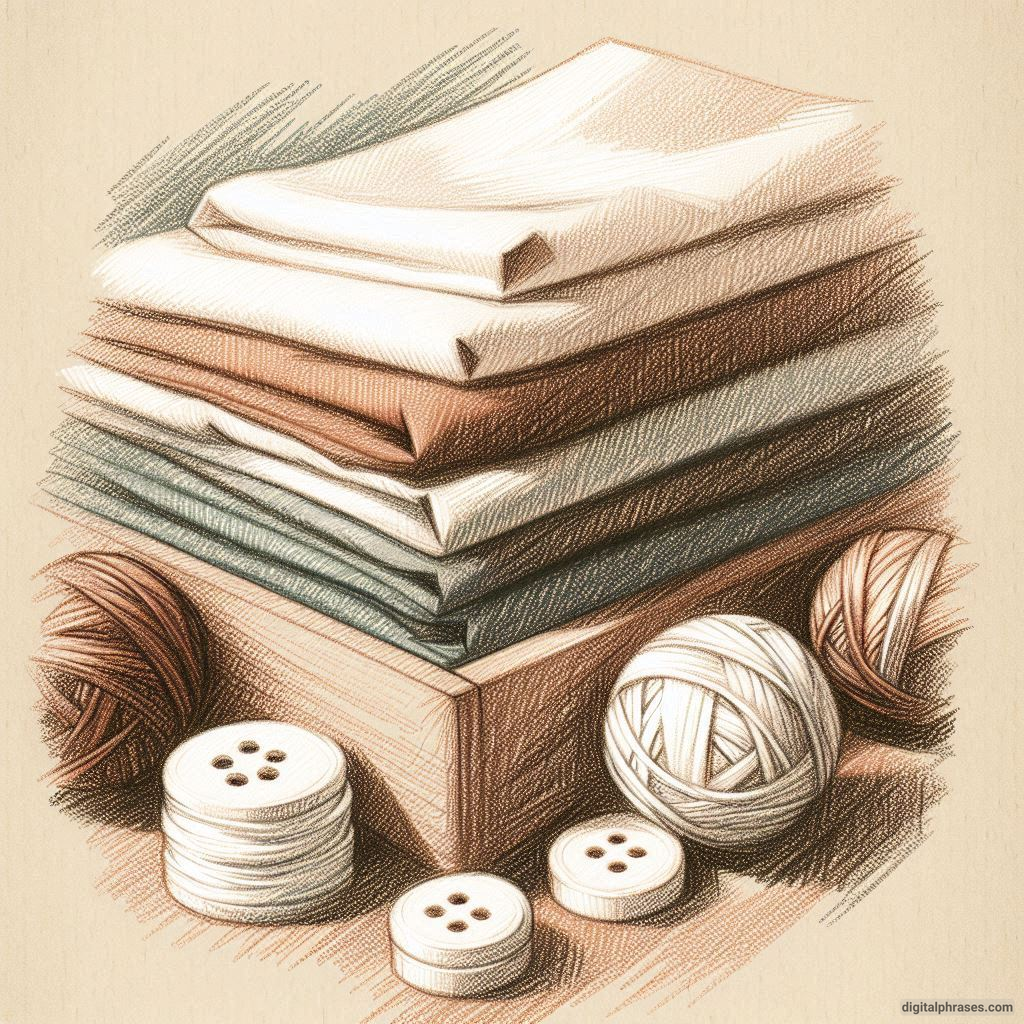
7
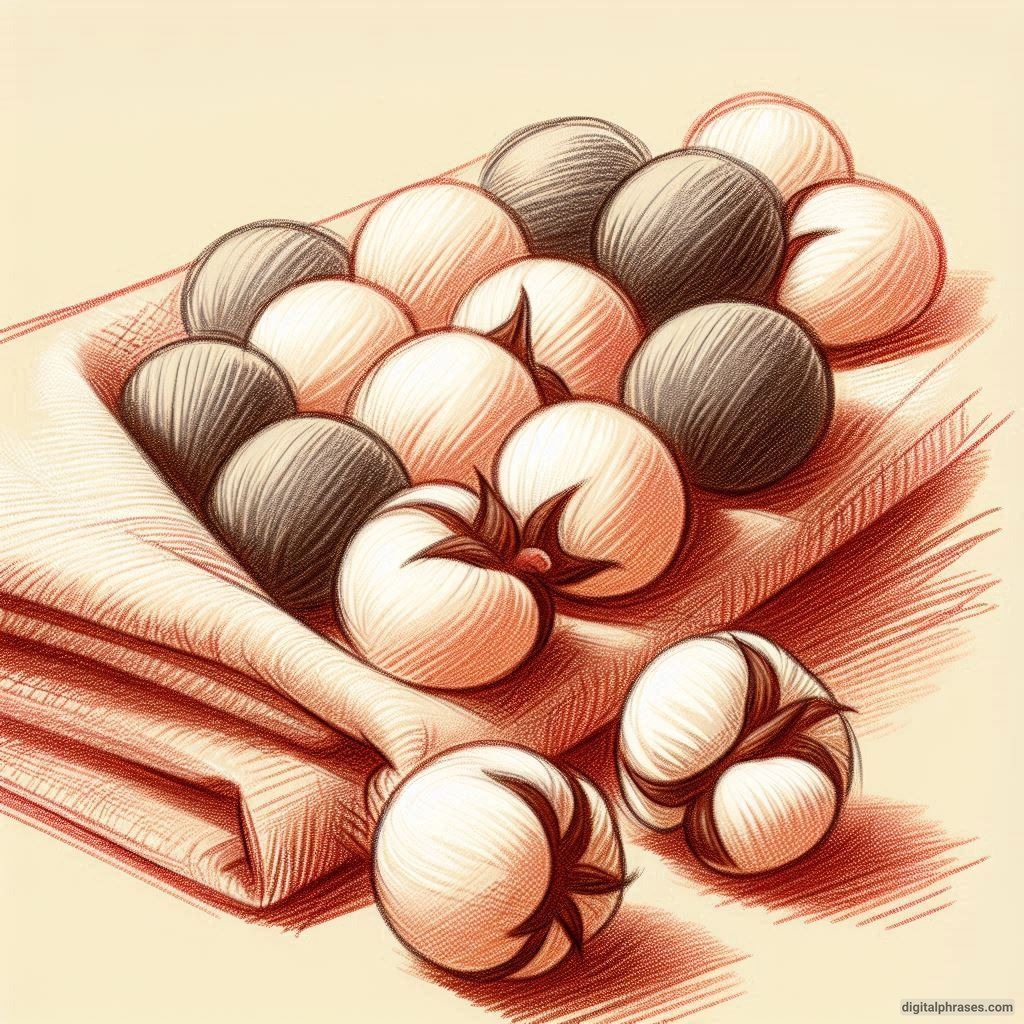
8
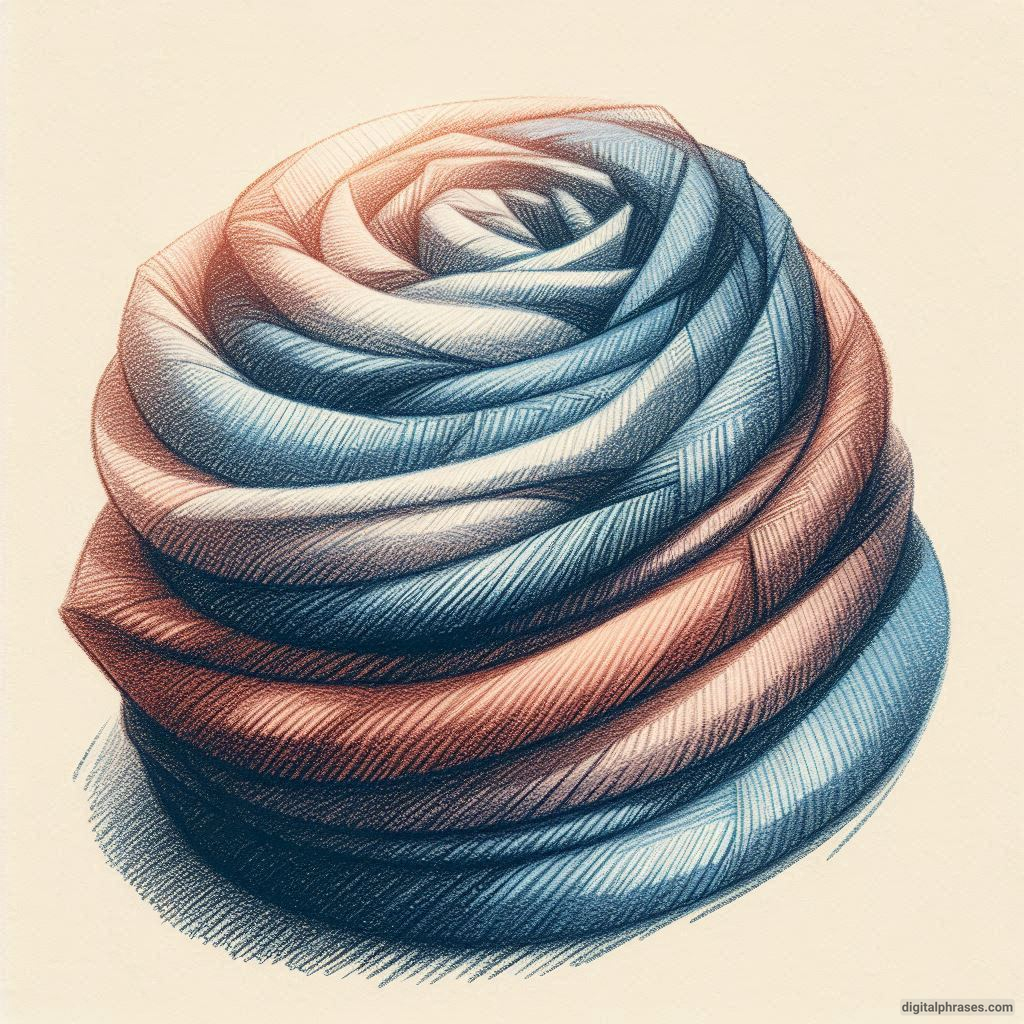
9
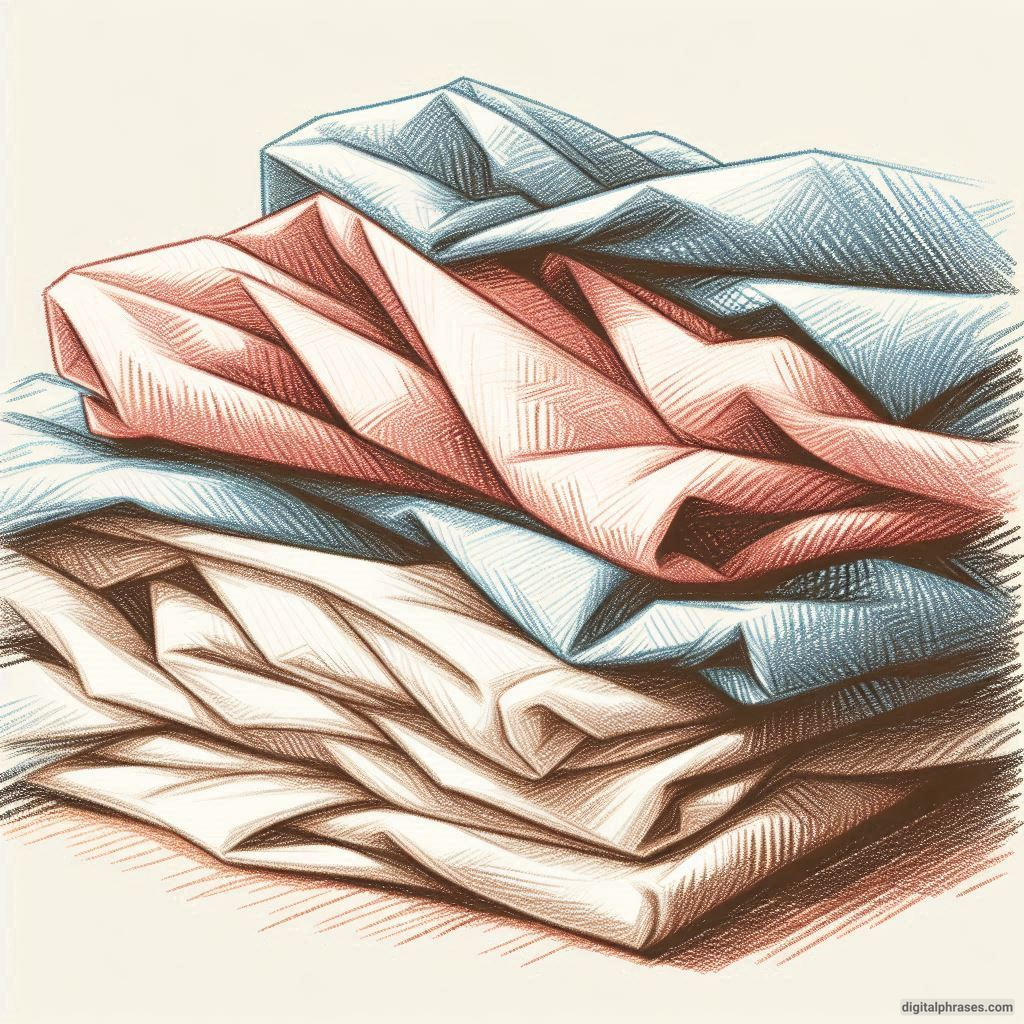
10
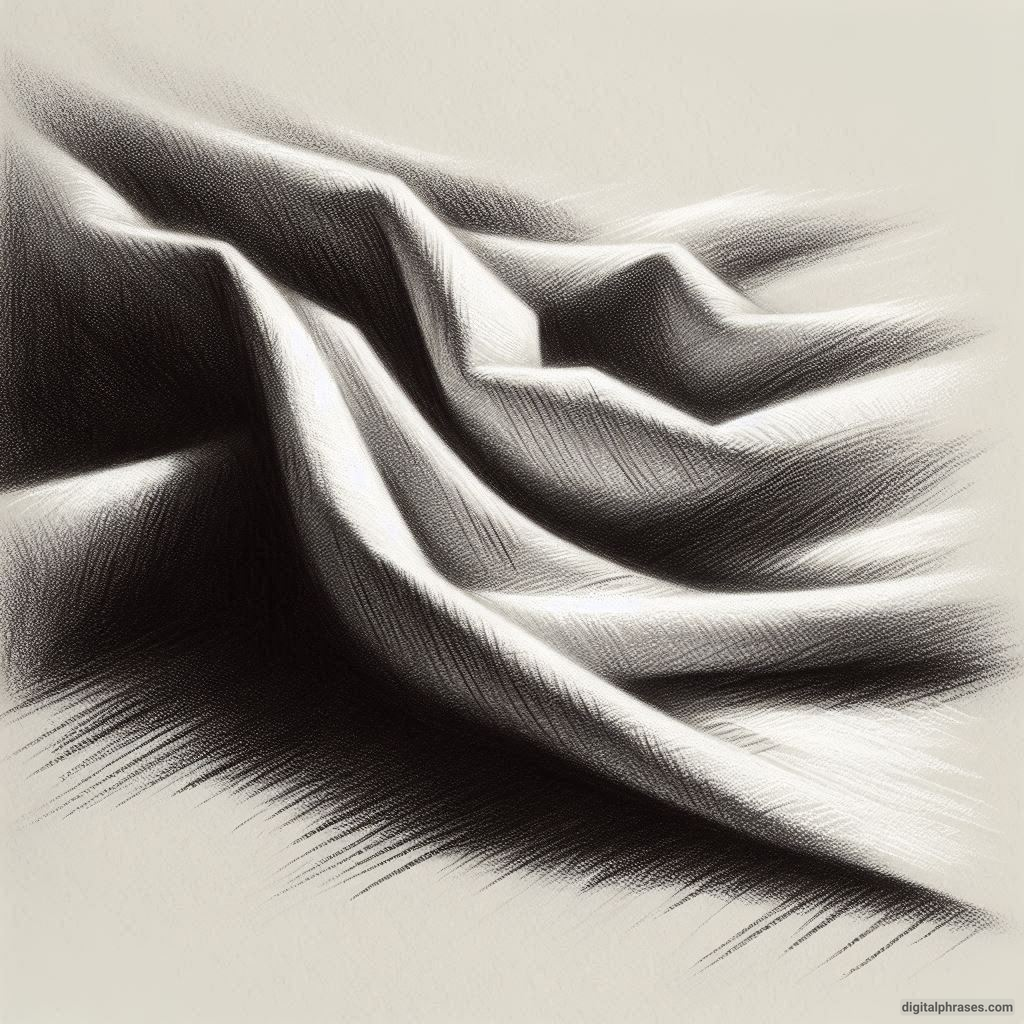
Things To Keep in Mind While Executing These Drawings
1. Observe Real Fabrics Closely
Before you start drawing, spend time observing real fabrics. Notice how different materials like silk, cotton, denim, or wool react to light and gravity. Pay attention to:
- Folds and Creases: Observe how tension points create folds.
- Surface Texture: Notice the smoothness of silk versus the roughness of burlap.
- Light and Shadow: Identify how shadows fall and highlights pop depending on the fabric type.
Studying real-life references helps you understand fabric behavior, which is essential for creating convincing textures.
2. Understand the Flow and Weight of Fabric
Fabric behaves differently depending on its weight and flow. Lightweight fabrics like chiffon or silk will drape and fold delicately, while heavier fabrics like denim or canvas create stiffer, more pronounced folds. When drawing:
- Use Curved Lines for Soft Fabrics: Gentle curves convey a fluid feel.
- Sharp Angles for Stiff Fabrics: Crisp, angular folds suggest rigidity.
Understanding how gravity interacts with fabric helps in rendering realistic drapery and movement.
3. Master the Play of Light and Shadow
Light and shadow define the form of fabric. To make your drawing more three-dimensional:
- Identify the Light Source: Determine where the light is coming from.
- Use Gradients: Smooth transitions for soft fabrics; stark contrasts for crisper materials.
- Highlight Key Areas: Accentuate the peaks of folds with highlights and deepen the valleys with shadows.
Proper shading adds volume and depth, making the fabric appear tactile.
4. Detailing with Texture and Patterns
Textures like velvet, lace, or denim have unique surface qualities. When adding these details:
- Simplify Patterns: Avoid overwhelming the viewer with too much detail.
- Imply Texture: Use short strokes, dots, or cross-hatching to suggest texture without overworking the piece.
Balancing detail and simplicity ensures the fabric looks realistic without cluttering your artwork.
5. Practice Dynamic Drapery Studies
Consistent practice is key. Study how fabrics behave in different scenarios:
- Hanging Cloth: Observe curtains or scarves.
- Wrapped Around Objects: Analyze how fabric conforms to shapes.
- In Motion: Look at how fabric flows with movement, like in dance or wind.
Sketch quick studies focusing on different fabrics to build muscle memory and improve your understanding of texture and form.


